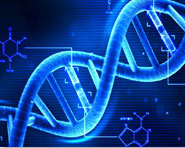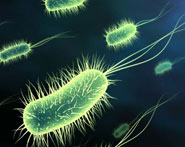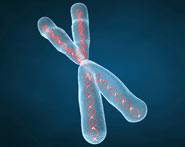


 النبات
النبات
 الحيوان
الحيوان
 الأحياء المجهرية
الأحياء المجهرية
 علم الأمراض
علم الأمراض
 التقانة الإحيائية
التقانة الإحيائية
 التقنية الحيوية المكروبية
التقنية الحيوية المكروبية
 التقنية الحياتية النانوية
التقنية الحياتية النانوية
 علم الأجنة
علم الأجنة
 الأحياء الجزيئي
الأحياء الجزيئي
 علم وظائف الأعضاء
علم وظائف الأعضاء
 الغدد
الغدد
 المضادات الحيوية
المضادات الحيوية|
Read More
Date: 7-10-2021
Date: 28-11-2021
Date: 13-10-2021
|
Porphyrins
Porphyrins are cyclic compounds that readily bind metal ions, usually ferrous (Fe2+) or ferric (Fe3+) iron. The most prevalent metalloporphyrin in humans is heme, which consists of one Fe2+ coordinated in the center of the tetrapyrrole ring of protoporphyrin IX . Heme is the prosthetic group for hemoglobin (Hb), myoglobin, the cytochromes, the cytochrome P450 (CYP) monooxygenase system, catalase, nitric oxide synthase, and peroxidase. These hemeproteins are rapidly synthesized and degraded. For example, 6–7 g of Hb is synthesized each day to replace heme lost through the normal turnover of erythrocytes. The synthesis and degradation of the associated porphyrins and recycling of the iron are coordinated with the turnover of hemeproteins.
Structure
Porphyrins are cyclic planar molecules formed by the linkage of four pyrrole rings through methenyl bridges (Fig. 1). Three structural features of these molecules are relevant to understanding their medical significance.

Figure 1: Structures of uroporphyrin I and uroporphyrin III.
1. Side chains: Different porphyrins vary in the nature of the side chains attached to each of the four pyrrole rings. Uroporphyrin contains acetate (−CH2–COO–) and propionate (−CH2–CH2–COO–) side chains; coproporphyrin contains methyl (−CH3) and propionate groups; and protoporphyrin IX (and heme b, the most common heme) contains vinyl (−CH=CH2), methyl, and propionate groups. [Note: The methyl and vinyl groups are produced by decarboxylation of acetate and propionate side chains, respectively.]
2. Side chain distribution: The side chains of porphyrins can be ordered around the tetrapyrrole nucleus in four different ways, designated by Roman numerals I to IV. Only type III porphyrins, which contain an asymmetric substitution on ring D (see Fig. 1), are physiologically important in humans. [Note: Protoporphyrin IX is a member of the type
III series.]
3. Porphyrinogens: These porphyrin precursors (for example, uroporphyrinogen) exist in a chemically reduced, colorless form and serve as intermediates between porphobilinogen (PBG) and the oxidized, colored protoporphyrins in heme biosynthesis.



|
|
|
|
لصحة القلب والأمعاء.. 8 أطعمة لا غنى عنها
|
|
|
|
|
|
|
حل سحري لخلايا البيروفسكايت الشمسية.. يرفع كفاءتها إلى 26%
|
|
|
|
|
|
|
في مدينة الهرمل اللبنانية.. وفد العتبة الحسينية المقدسة يستمر بإغاثة العوائل السورية المنكوبة
|
|
|